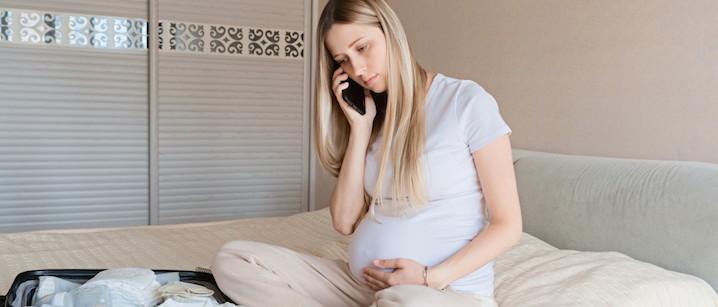
With your growing abdomen and all the changes in your body, there is apt to be aches and pains associated with pregnancy. One of the most concerning for many pregnant women is pelvic pain. Pelvic pain can be attributed to more than just the weight of the uterus and fetus and it is not always associated with labor.
Warning: Pain in the first 2-6 weeks of the pregnancy could signal a life-threatening ectopic pregnancy. You must see your doctor or go to a hospital if there is a suspicion of an ectopic pregnancy.
Progesterone and pelvic pain
After the egg is released from the fallopian tube during ovulation, the corpus luteum signals the release of additional progesterone. Progesterone “tells” the uterine lining to thicken in preparation for implantation and pregnancy. If the egg is fertilized and implants in the uterus, human chorionic gonadotropin is released and levels of this pregnancy hormone start to rise. As long as hCG is present in the blood, the corpus luteum stays alive and continues to push progesterone to continue pregnancy functions. Progesterone works on multiple levels in the body during pregnancy, but the one function associated with pelvic pain is related to ligaments and other connective tissues.
During labor, the pelvis must spread wide enough to allow the fetus to move out of the uterus, through the cervix, into the birth canal, and eventually out into the world. The pelvis is not designed to accommodate childbirth at any other time other than during pregnancy. Progesterone loosens ligaments and connective tissue so this spread can occur, but the process is not perfect.
When progesterone loosens ligaments and connective tissues in preparation for childbirth, the same signal goes to the rest of the body as well. Pelvic pain early in pregnancy is often attributed to this spread and progesterone. As the ligaments and connective tissues loosen, the pelvis widens. Pressure from the weight of the uterus and fetus bears down on the pelvis causing additional spreading. Early pelvic pain is typically associated with the loosening of the ligaments. Later in the pregnancy, pelvic pain is often attributed to the additional weight causing an even further spread and more pelvic pain.
As the last weeks of the third trimester arrive, many women worry about pelvic pain associated with childbirth. While the pelvis will have to spread open to accommodate the fetus, much of the pain felt during childbirth is associated with uterine contractions. Uterine contractions are often compared to “Charlie horses” or extreme muscle cramps that last several minutes at a time. Any pelvic pain during childbirth tends to be overshadowed by uterine contractions.
Pelvic pain during pregnancy is a common symptom that nearly every woman will feel. In most cases, the pelvic pain is natural and normal, but if the pelvic pain is associated with yellow or green vaginal discharge, foul-smelling vaginal discharge, cramping, bleeding or a gush of fluid from the vagina, seek medical attention.
Read More:
Pelvic Pressure In Pregnancy: Causes And Treatment
Pregnancy Cramping: Identifying Causes
How Safe Is Sex During And After Pregnancy?
